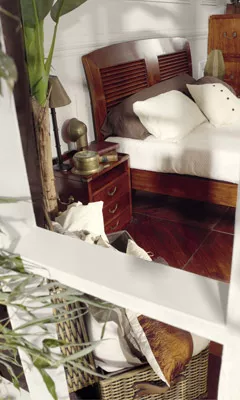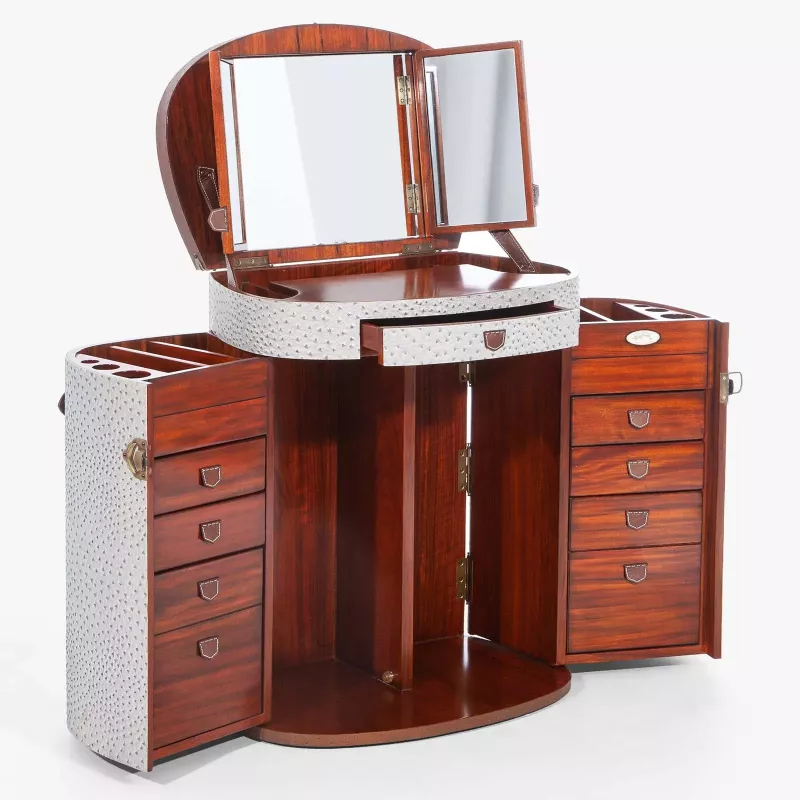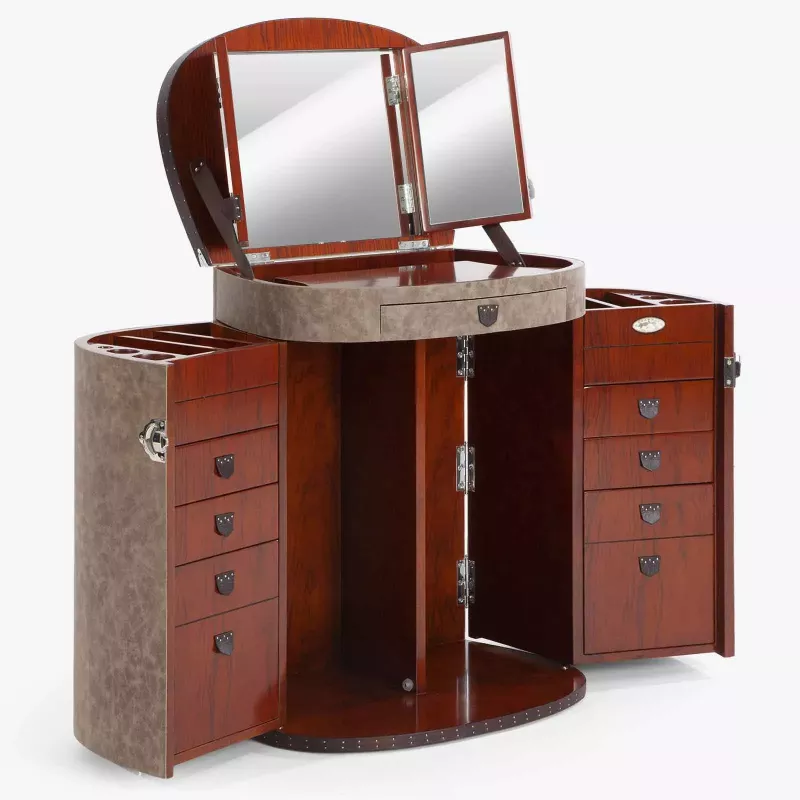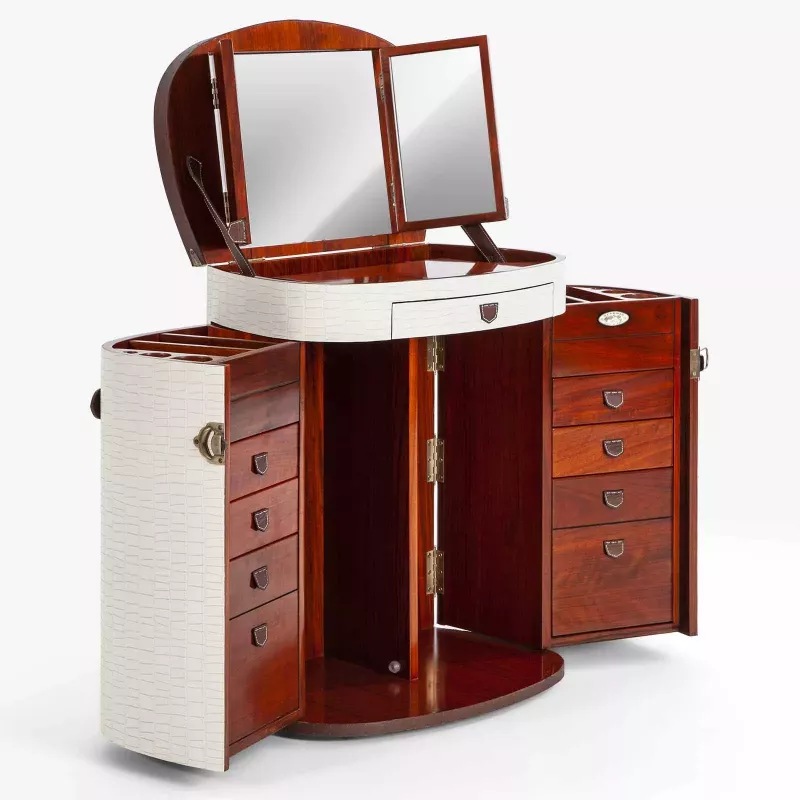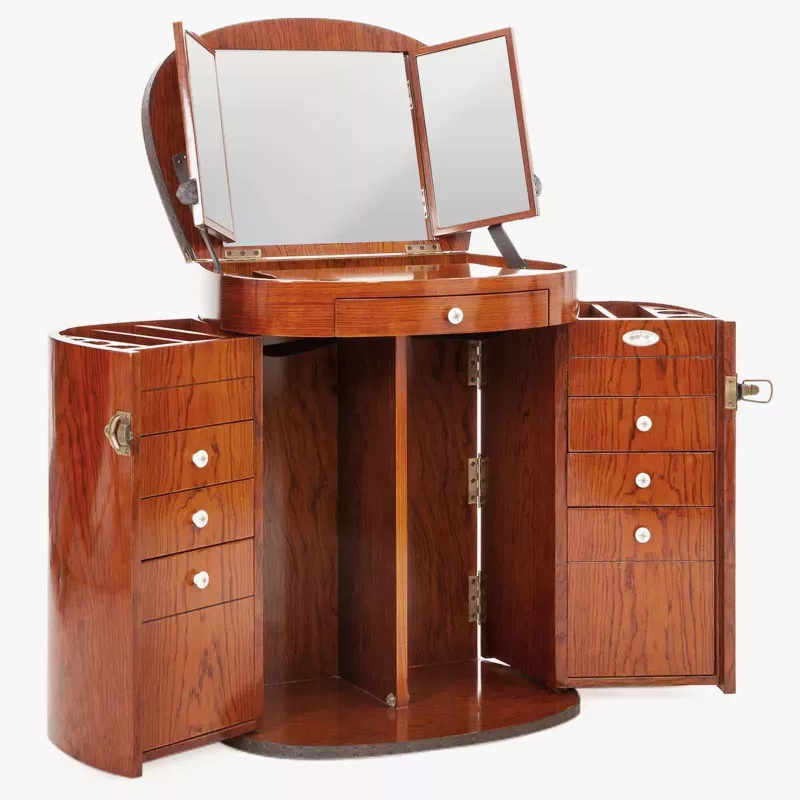MARIE GALANTE - Travel make up trunk, grey
Reference : STAR-0011-OST-GREY
Dimensions : W60 x D40 x H73 cm
Very feminine, this travel dressing table closes and unfolds in an instant, revealing all the accessories needed for a charming soirée. Displaid here in grey faux ostrich upholstery, this aesthetic piece of furniture adds a refined touch to the atmosphere of any bedroom.

Custom manufacturing

Premium materials

Traditional assemblies

Exceptional finishes
Product informations
Features
- Flap top with triptych of folding mirrors
- One central drawer in front
- Two semi-circular doors with three drawers
- Special space for brushes and styling accessories
- Seat not included
Finishes
- Wood varieties : prunus avium (cherry), Entandrophragma cylindricum (sapelli), Entandrophragma utile (sipo), Juglans nigra (black walnut)
- Rosewood varnish finish
- Solid brass hardware : lock, hinges, label-holder, nails
- Full grain leather : overstitched decorative carrying handles, studded edges, drawers handles, flap straps
- Cased in faux ostrich grey coated canvas
- Engraved and inked Starbay bone logo
Technical information
- Furniture delivered already assembled
- Parcel : W70 x D50 x H83 cm / 56 kg
Maintenance tips
- Remove dust with an anti-static or slightly damp cloth
- Do not apply wax to avoid clogging the varnish
- Avoid cleaning with products that could potentially be abrasive to varnish
- Always protect surfaces before applying liquids or heat
- Nourish leather with body milk (for baby ideally)
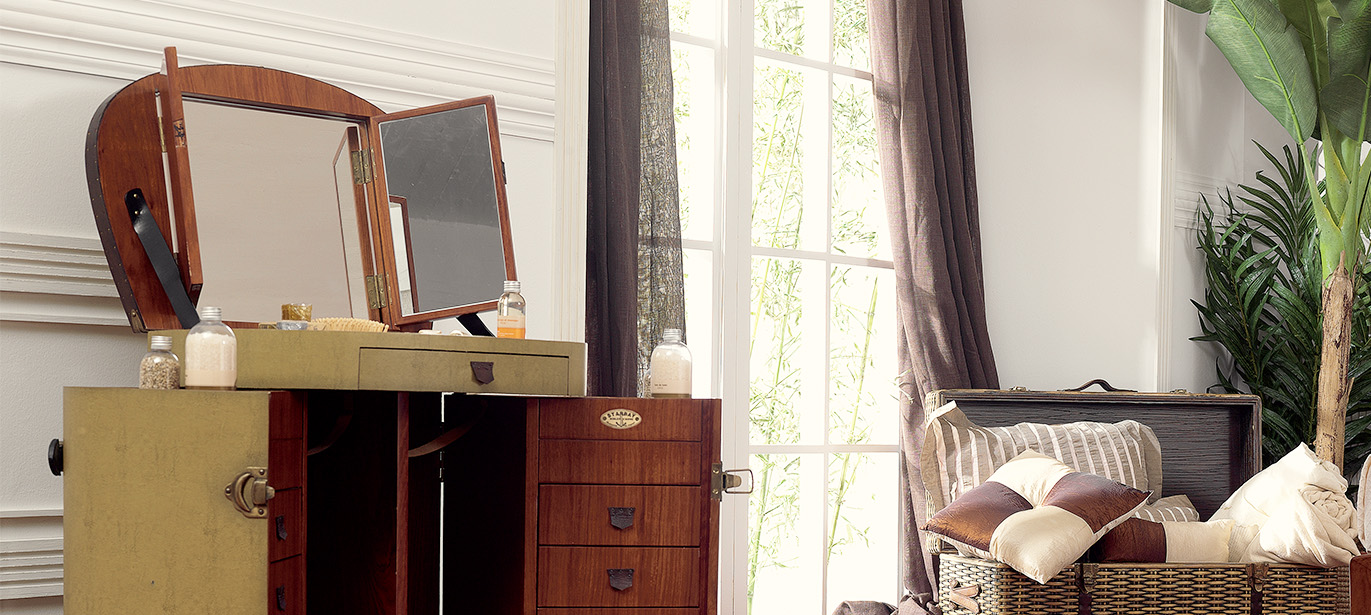

Secure
payment

Made-to-measure
delivery

Customer service
and workshops in France

Click
& Collect
You may also like
Previous
Next

